Direction (1 – 5): Table given below shows ratio of failed girls to failed boys and ratio of passed boys to passed girls and percentage of failed students out of total students in five schools (A, B C, D & E). Read the data carefully and answer the questions.
Note – All students in each school appeared in exam.
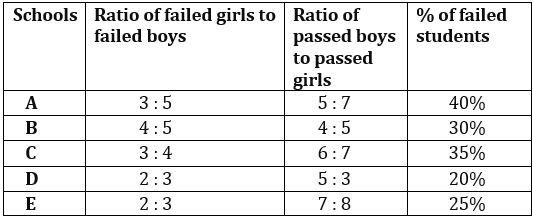
Q1. If difference between passed boys & passed girls from A & E is 80 & 50 respectively, then find total failed girls from both schools together?
(a) 220
(b) 240
(c) 260
(d) 300
(e) 200
Q2. If ratio of total failed students from B to that of C is 9 : 7 and total passed students from both the schools together are 1020, then find total students in these two schools together.
(a) 1400
(b) 1200
(c) 1500
(d) 1000
(e) 800
Q3. If difference between passed girls and passed boys from D is 100 and total failed students from E are 150% more than that of from D, then find ratio of total students from D to that of from E?
(a) 2 : 1
(b) 1 : 4
(c) 2 : 3
(d) 1 : 3
(e) 1 : 2
Q4. If total passed students from E are 56.25% more than that of from A, then find total failed students from A are what percent more than that of from E?
(a) 24%
(b) 28%
(c) 32%
(d) 30%
(e) 20%
Q5. If total students from C are 25% less than that of from A and total failed students from both schools together are 530, then find average number of passed boys from both schools?
(a) 120
(b) 170
(c) 190
(d) 180
(e) 160
Direction (6-10):-The bar graph shown below shows the number of males and females in five cities A,B,C,D and E. Read the graph and answer the given questions.
(Total population = No. of Males + No. of females)
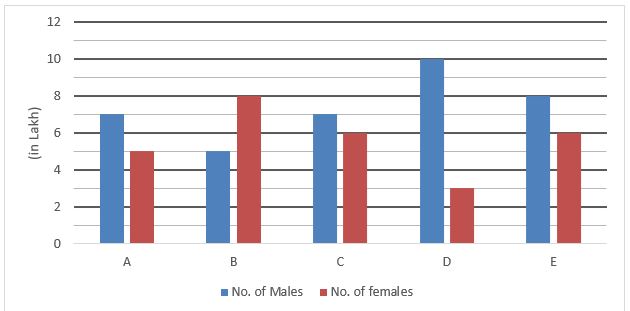
Q6. Which city has the minimum population among the five cities?
(a) E
(b) D
(c) C
(d) B
(e) A
Q7. If no. of males in city A & B increase by 10% & 20% respectively, then what will be the difference in total population of A & B?
(a) 1 lakh
(b) 1.1 lakh
(c) 1.2 lakh
(d) 1.3 lakh
(e) 1.4 lakh
Q8. Find the ratio of the average no. of males in B, C & D to average no. of females in C, D & E ?
(a) 15 : 23
(b) 15 : 22
(c) 22 : 15
(d) 23 : 15
(e)25:13
Q9. What is % of females (approximate) in total population?
(a) 35%
(b) 43%
(c) 50%
(d) 30%
(e) 55%
Q10. If the total population of D & B increases by 10% & 15% respectively, then what will be the ratio of no. of males in D to no. of females in B?
(a) 7 : 13
(b) 2 : 1
(c) 1 : 2
(d) Can’t be determined
(e) None of these
Directions (11-15): Study the radar chart given below and answer the following questions.
Radar chart shows the number of employees (in ’00) in 5 different departments (A, B, C, D & E) of a company in 2016, 2017 & 2018.
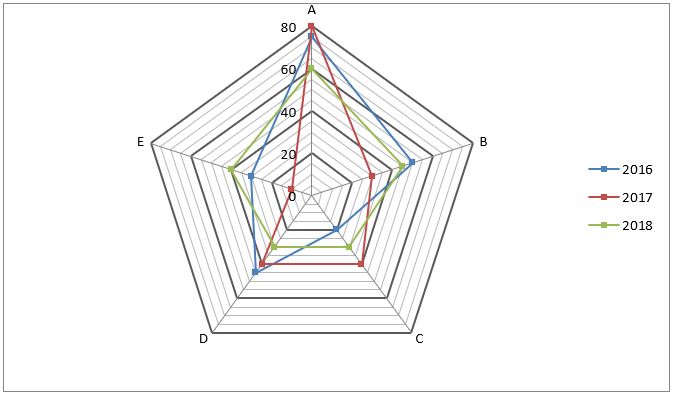
Q11. Average number of employees in A, D & E in 2016 is what percent of employees in A & E together in 2018?
(a) 40%
(b) 20%
(c) 80%
(d) 50%
(e) 90%
Q12. Find ratio of employees of E in 2016, 2017 & 2018 together to employees in A in 2016 & 2018 together.
(a) 11 : 15
(b) 16 : 27
(c) 13 : 16
(d) 3 : 4
(e) 2 : 3
Q13. Employees in company in 2016 are approximately what percent more or less than employees in company in 2018?
(a) 11%
(b) 10%
(c) 7%
(d) 5%
(e) 9%
Q14. If in 2019 total employees in company are increased by 5% as compared to total employees in company in 2017 and ratio of employees (A : B : C : D : E) in 2019 is 9 : 14 : 5 : 10 : 4, then find total employees in C & D together in 2019 are how much more or less than total employees in B in 2016 & 2017 together.
(a) 500
(b) 2500
(c) 2000
(d) 1000
(e) 1500
Q15. Employees in A & B together in 2018 are what percent more or less than employees in C, D & E together in 2017?
(a) 15⅔%
(b) 28⅓%
(c) 25⅔%
(d) 19⅓%
(e) 16⅔%
Solutions
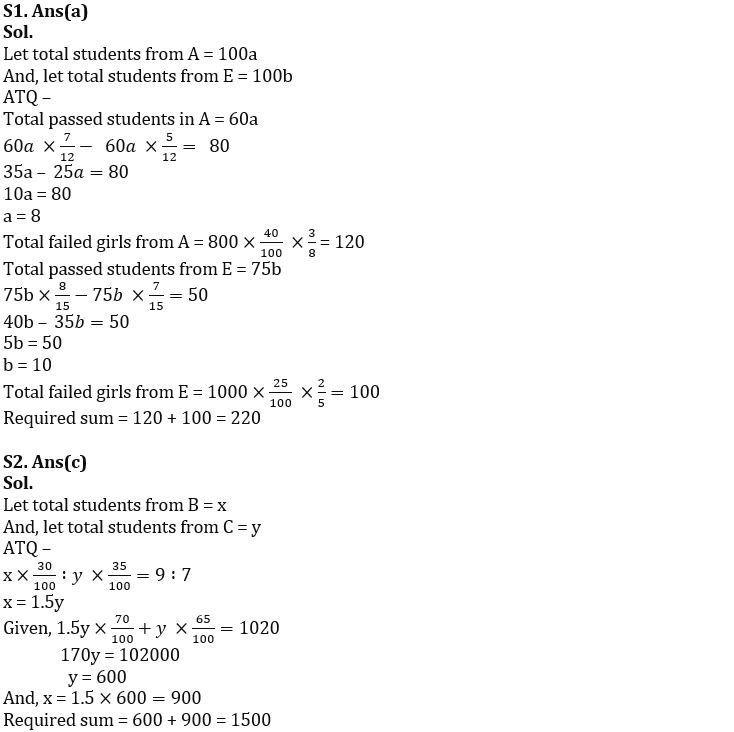
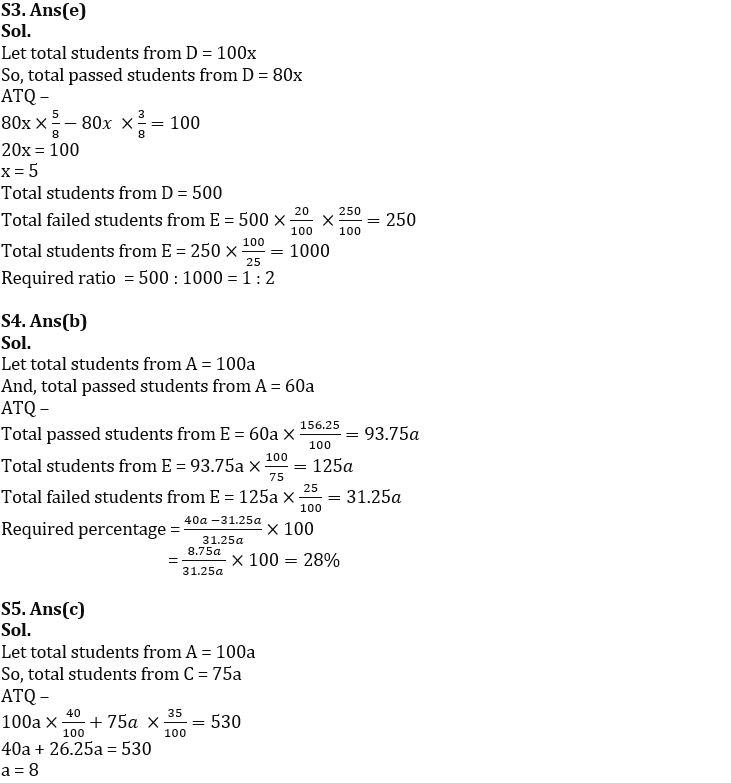
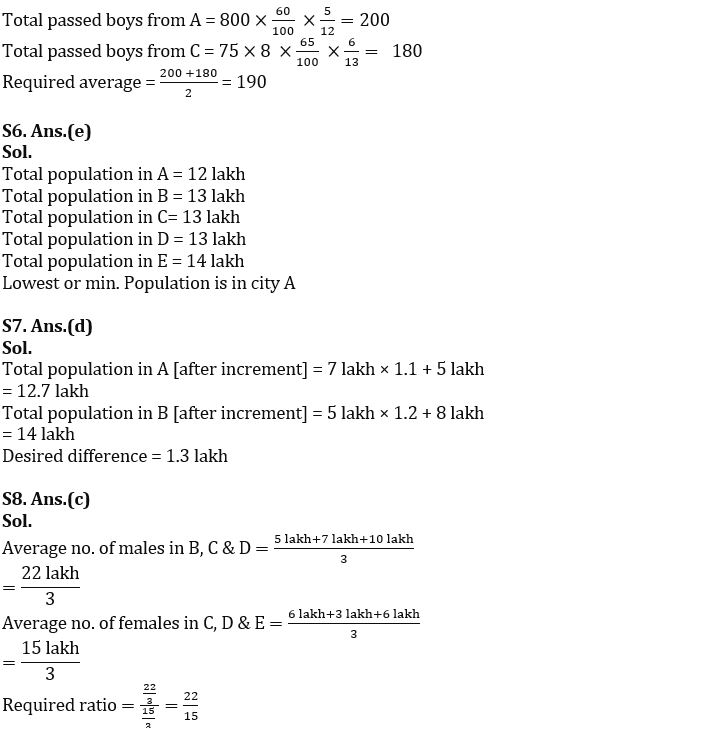
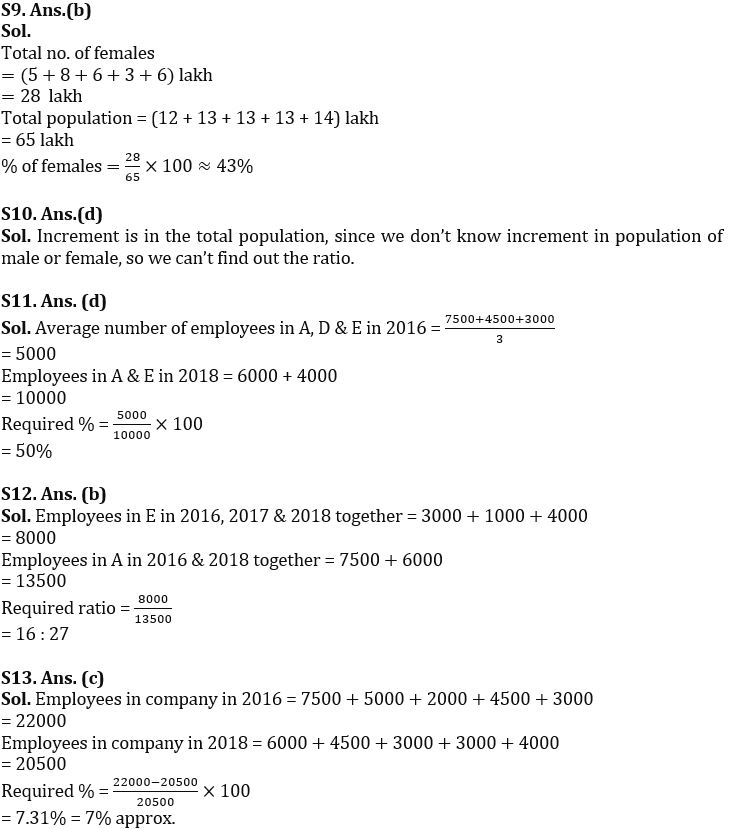
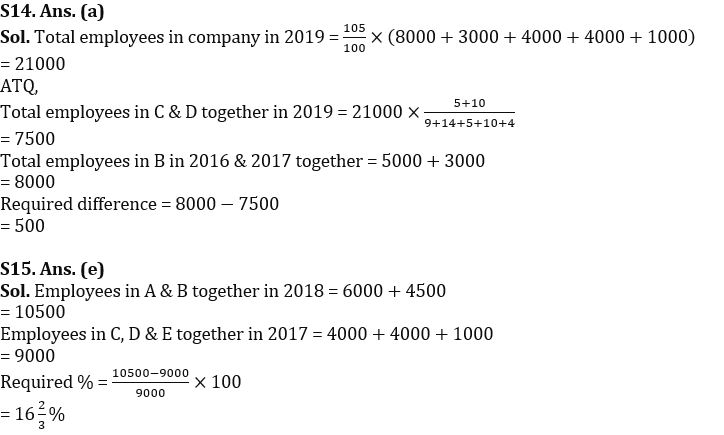





 Data Interpretation Questions for SBI PO...
Data Interpretation Questions for SBI PO...
 Data Interpretation Questions For Bank E...
Data Interpretation Questions For Bank E...
 Quantitative Aptitude Quiz For Bank Main...
Quantitative Aptitude Quiz For Bank Main...





